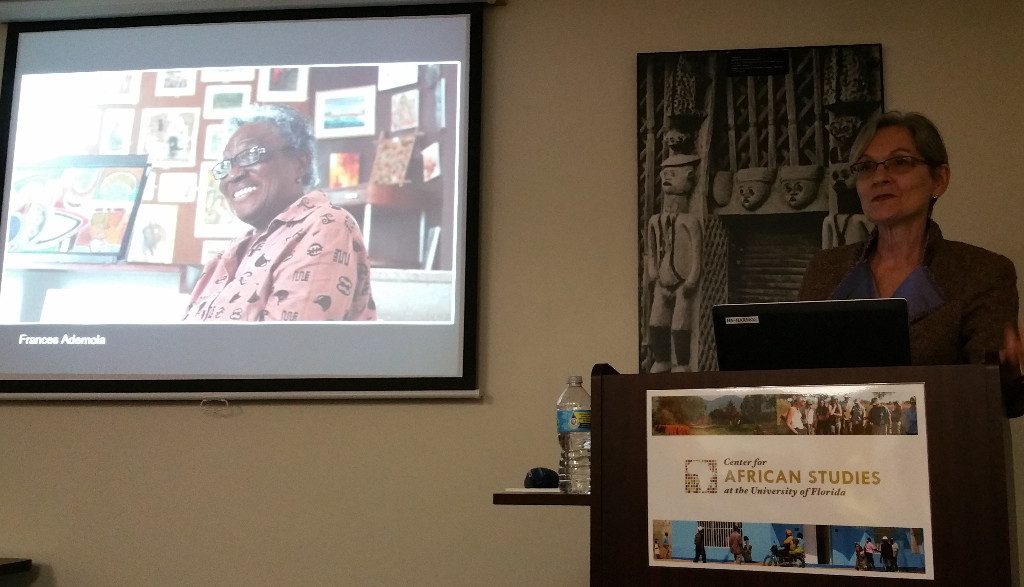Note: The summary of this Baraza was graciously written by Ibrahim Yahaya Ibrahim, a Doctoral Candidate in the Political Science Dept. at UF.
On Friday January 20th 2017, Susan Cooksey, Rebecca Nagy, and Alissa Jordan presented their research on contemporary art scene in Accra and Kumasi. The presentation was based on a field research that the three scholars conducted together during the summer of 2016 in Ghana where they interviewed different actors, including scholars, artists, and other stakeholders in the Ghanaian art sphere.
Dr. Susan Cooksey, a PhD from the University of Iowa and professor of Art History at the University of Florida opened the presentation. She focused her talk on the dynamic role that University scholars and students have played in transforming the Ghanaian contemporary art both domestically and globally. Scholars at the Kwame Nkrumah University of Science and Technology in Kumasi have developed a full pledged art curriculum, and over the years students have created their own exhibitions. The production of Art has intensified and diversified with productions that address as diverse social issues as gender discrimination, LGBT matters, etc. At the global level, many of these scholars have participated in conferences and exhibitions around the world to present their work on the Ghanaian art.
Second, Dr. Rebecca Nagy, who is the Director of the Samuel P. Harn Musuem of Art at UF and a PhD from the University of North Carolina Chapel Hill, pursed the presentation emphasizing the role of art galleries in promoting the Ghanaian art scene. The galleries created by Ghanaians have allowed local artists to showcase their work, which is considered a significant progress from the classic approach where artists exhibit their work in big hotels only for foreign tourists to buy. These galleries are also places where intellectual discussions are organized to talk about arts, exhibition, theatres, etc. In sum, galleries are places for Ghanaians to come see, enjoy, and learn about their own art.
Finally, Dr. Alissa Jordan, a December 2016 PhD in Anthropology from the University of Florida, concluded the presentation with a talk on network analysis of the Accra’s art world. She uses Gephi software to map people, places, events and ideas within the art sphere in Accra. She finds that there is a network that influences art production and help artists to stay in contact. She identifies three major influences on the Accra contemporary art sphere, which include the Foundation of Contemporary Art, the Castro and Kari Kacha at KNUST, and Nana Aforiatta Ayim and ANO. The main goal of this network is to keep artists in Ghana by creating a good environment for them to work effectively and productively.
The overall takeaway from the presentation is that the contemporary art sphere in Ghana has become more vibrant due to increasing efforts by University scholars, students and other stakeholders to popularize the Ghanaian art both domestically and internationally. As part of this dynamic, the creation of galleries has allowed local artists to showcase their work in a public yet professional setting, and the whole sphere has constituted a network of support for artists and other actors intervening in that sphere. The presentation was supported with interesting pictures and a video clip.